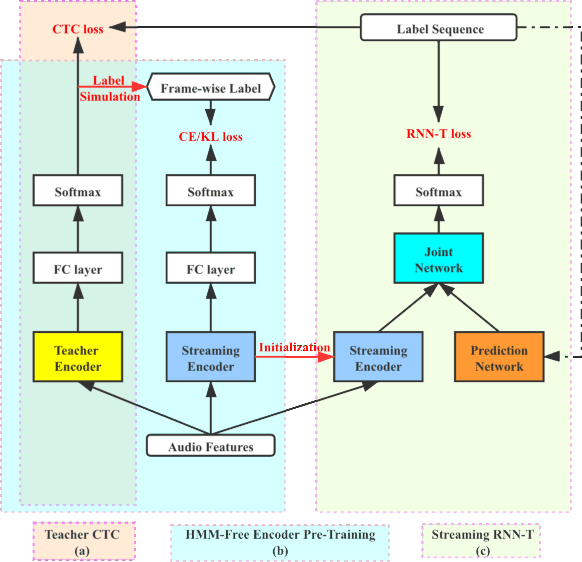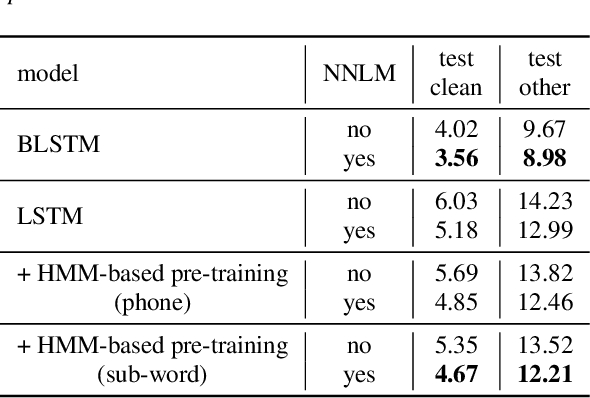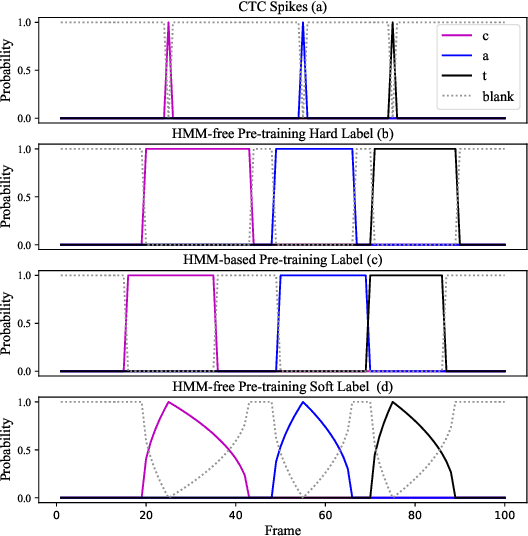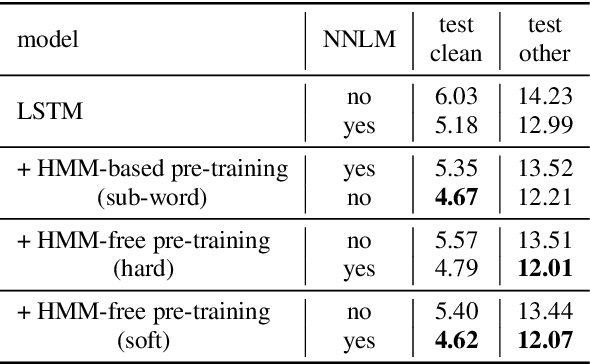Jingyu Sun
Dynamic Latency for CTC-Based Streaming Automatic Speech Recognition With Emformer
Mar 29, 2022



Abstract:An inferior performance of the streaming automatic speech recognition models versus non-streaming model is frequently seen due to the absence of future context. In order to improve the performance of the streaming model and reduce the computational complexity, a frame-level model using efficient augment memory transformer block and dynamic latency training method is employed for streaming automatic speech recognition in this paper. The long-range history context is stored into the augment memory bank as a complement to the limited history context used in the encoder. Key and value are cached by a cache mechanism and reused for next chunk to reduce computation. Afterwards, a dynamic latency training method is proposed to obtain better performance and support low and high latency inference simultaneously. Our experiments are conducted on benchmark 960h LibriSpeech data set. With an average latency of 640ms, our model achieves a relative WER reduction of 6.0% on test-clean and 3.0% on test-other versus the truncate chunk-wise Transformer.
Locality Matters: A Locality-Biased Linear Attention for Automatic Speech Recognition
Mar 29, 2022



Abstract:Conformer has shown a great success in automatic speech recognition (ASR) on many public benchmarks. One of its crucial drawbacks is the quadratic time-space complexity with respect to the input sequence length, which prohibits the model to scale-up as well as process longer input audio sequences. To solve this issue, numerous linear attention methods have been proposed. However, these methods often have limited performance on ASR as they treat tokens equally in modeling, neglecting the fact that the neighbouring tokens are often more connected than the distanced tokens. In this paper, we take this fact into account and propose a new locality-biased linear attention for Conformer. It not only achieves higher accuracy than the vanilla Conformer, but also enjoys linear space-time computational complexity. To be specific, we replace the softmax attention with a locality-biased linear attention (LBLA) mechanism in Conformer blocks. The LBLA contains a kernel function to ensure the linear complexities and a cosine reweighing matrix to impose more weights on neighbouring tokens. Extensive experiments on the LibriSpeech corpus show that by introducing this locality bias to the Conformer, our method achieves a lower word error rate with more than 22% inference speed.
HMM-Free Encoder Pre-Training for Streaming RNN Transducer
Apr 02, 2021



Abstract:This work describes an encoder pre-training procedure using frame-wise label to improve the training of streaming recurrent neural network transducer (RNN-T) model. Streaming RNN-T trained from scratch usually performs worse and has high latency. Although it is common to address these issues through pre-training components of RNN-T with other criteria or frame-wise alignment guidance, the alignment is not easily available in end-to-end manner. In this work, frame-wise alignment, used to pre-train streaming RNN-T's encoder, is generated without using a HMM-based system. Therefore an all-neural framework equipping HMM-free encoder pre-training is constructed. This is achieved by expanding the spikes of CTC model to their left/right blank frames, and two expanding strategies are proposed. To our best knowledge, this is the first work to simulate HMM-based frame-wise label using CTC model. Experiments conducted on LibriSpeech and MLS English tasks show the proposed pre-training procedure, compared with random initialization, reduces the WER by relatively 5%~11% and the emission latency by 60 ms. Besides, the method is lexicon-free, so it is friendly to new languages without manually designed lexicon.
 Add to Chrome
Add to Chrome Add to Firefox
Add to Firefox Add to Edge
Add to Edge